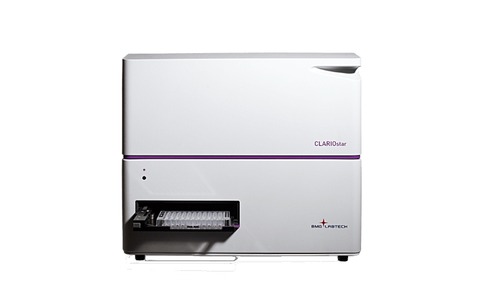
Microplate readers from BMG LABTECH feature with sensitive detection designed to get the most out of NanoBRET assays.
BRET assays used for GPCR and RTK drug development are under constant improvement: the small and bright NanoLuc luciferase brings miniaturisation; appropriate acceptor fluorophores increase spectral separation of donor and acceptor signals; novel labelling and genome-editing techniques ensure physiological expression and behaviour of interaction partners.
With the NanoLuc luciferase, Promega has created the next generation of BRET assays. The NanoLuc enzyme is smaller in size than other luciferases. At the same time its emission is brighter by several factors. These properties make the NanoLuc the perfect BRET donor. As BRET acceptor, a fluorescently labeled fusion protein are used such as the HaloTag that emits light in the red range (>610 nm).
The NanoBRET assay technology is intended for studying protein-protein interactions in living cells. The proteins of major interest are membrane receptors such as G-protein coupled receptors (GPCR) and receptor tyrosine kinases (RTK).
All BMG LABTECH microplate readers can be equipped with optimised filters to record the two BRET signals coming from NanoLuc luciferase and fluorophore.
The CLARIOstar with its linear variable filter (LVF) monochromator matches the two NanoBRET wavelengths without special filters. The flexibility to use the LVF monochromator for NanoBRET measurements enables discrimination of donor luminescence and two different acceptor fluorophores. This features a novel receptor internalisation assay.






